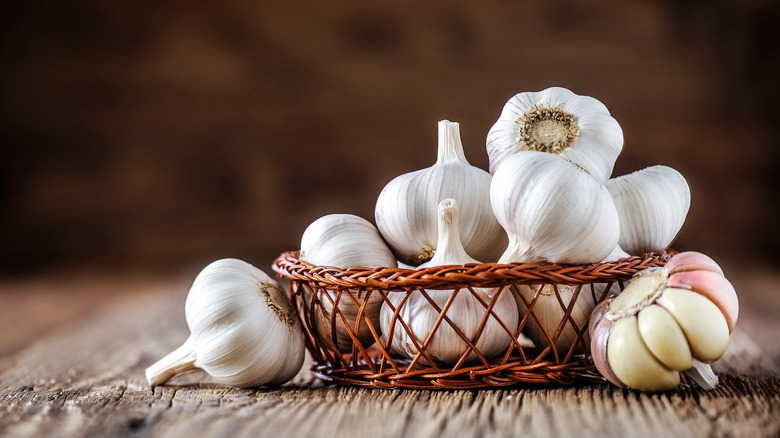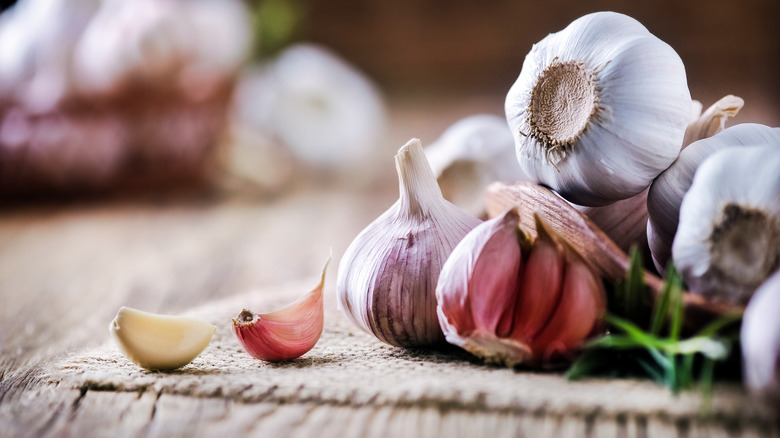Why You Don't Actually Need To Remove Those Green Sprouts In Your Garlic
If ever there was a gift from the culinary gods, garlic is it: this spicy, oniony allium adds so much flavor and so much dimension to our favorite dishes that we simply can't imagine cooking without it. Whether we're sautéing a veggie base for a soup or stew, preparing toasts to spread with dip, or busting out our favorite tomato sauce, we find ourselves reaching for garlic possibly more than any other ingredient in the kitchen.
But sometimes garlic can be tricky. When picking it out at the store, it's not always easy to tell which bulbs are freshest; we're never sure whether to store it in the pantry or the fridge; and, most common of all, we find ourselves plagued by that pesky green sprout that starts to grow out of older garlic cloves. Traditionally, we've always been told to remove that sprout before cooking, on the theory that it makes the rest of the garlic taste bitter (via Cook's Illustrated). But as it turns out, there's absolutely nothing wrong with sprouted garlic.
Don't bother cutting out that sprout
Many recipes and plenty of cooking advice around the internet advocate cutting out green garlic sprouts before proceeding to use the clove in cooking, on the theory that the sprout itself can impart a harsh or bitter taste on the final dish (via Serious Eats). But culinary authority Cook's Illustrated revised their advice after sampling the sprout alone and the clove below it alone. They found that the sprout's reputation for being bitter is unearned; that, rather, it "tasted herbal and grassy, while the cloves they came from tasted fiery and sharp compared to raw cloves that hadn't sprouted" (via Cook's Illustrated).
So, basically, it isn't the sprout that tastes sharp, it's the clove from which it sprouted. In that case, Cook's Illustrated advises, it's not worth it to remove the sprout; the whole clove is going to be a bit stronger-tasting regardless. You can go ahead and use the garlic taking that into account; or, "for more mellow, well-rounded garlic flavor in dishes that are garlic-forward, try to use cloves that haven't yet sprouted," recommends Cook's Illustrated.
So there you have it: embrace laziness – and sharpness – when your taste buds can handle it, and seek out fresher garlic when they can't.

